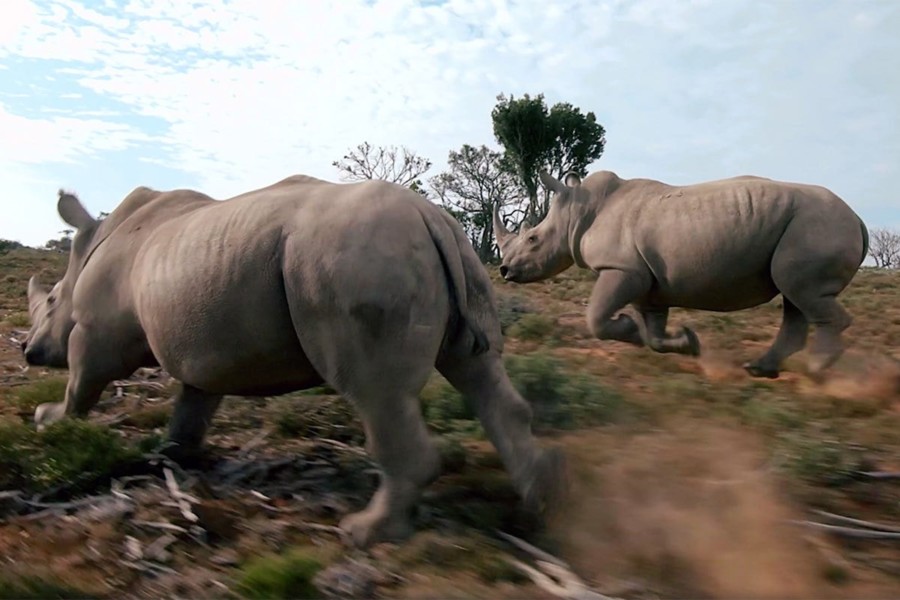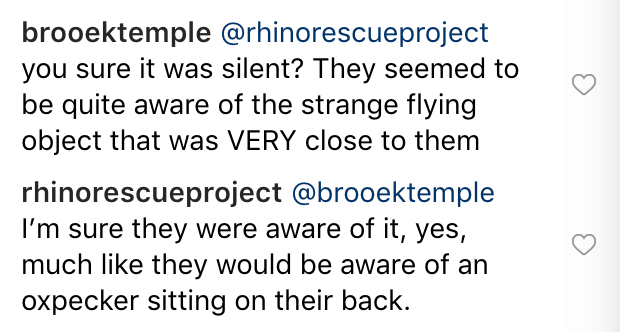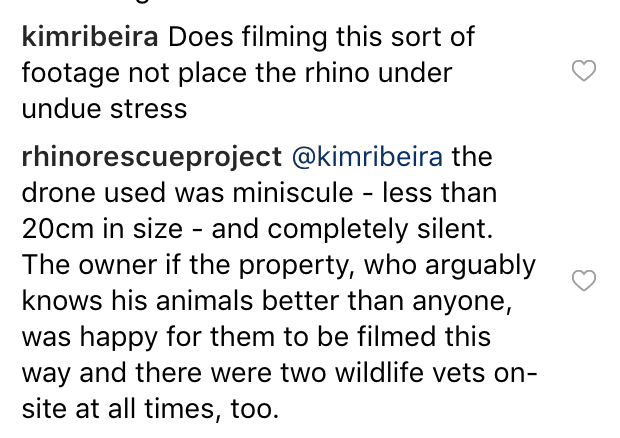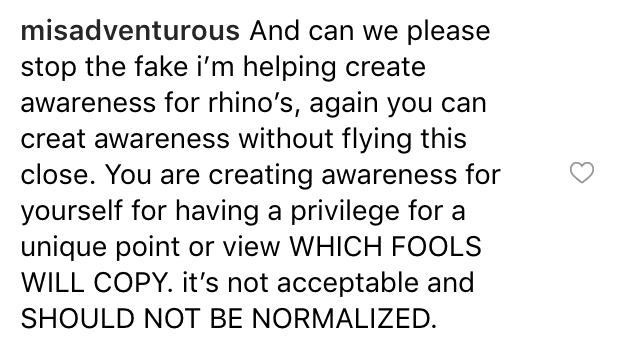Share
Does This Rhino Drone Video Help or Hurt Conservation?
22-year old professional drone racing pilot Johnny Schaer has built a strong social media following on Instagram and YouTube with visually stunning...

22-year old professional drone racing pilot Johnny Schaer has built a strong social media following on Instagram and YouTube with visually stunning video capture from his custom built drones. His skill level is piloting the drone is jaw dropping, and his scene visualization and video editing skills are also really advanced as seen in this video taken with permission in Saudi Arabia.
Schaer, who goes by “Johnny FPV,” recently visited a game preserve in South Africa with the Rhino Rescue Project, an organization that combats poaching by injecting material into rhino horns, which “renders it useless for ornamental or medicinal use.” And posted this incredible video of two stampeding rhinos first on Facebook, and then on Instagram.
His caption (which has been edited since its initial post) reads in part:
“These Rhinos are being killed and pushed toward extinction for their horns which provide no medicinal value. The two Rhinos seen In the video were near a road that is actively used by poachers, and under the supervision of Vetpaw and the private game reserve, we used the drone try and push them to a safer area. While this shot turned out beautiful, I should not have flown this close to the animals. This is not a responsible way to film wild life [sic].”
The Rhino Rescue Project also posted the video to their Instagram account, and multiple commenters questioned whether the drone was intrusive or harmful. The Project’s answer partially contradicts Schaer’s by implying that the animals weren’t bothered.


I am not an African wildlife biologist, and my attempt to contact specialists at the WWF was unsuccessful at the time of publishing. So it’s speculative to assess whether or not the rhinos were at risk as a result of this video capture (although they indisputably have very acute hearing).
Using visuals to advocate for conservationism has become commonplace. Veteran photojournalist Ami Vitale has focused many of her recent efforts on elephant and rhino conservation in Africa with images like these:
Documentaries like the acclaimed Blue Planet series have used drones, light aircraft and other innovative mechanisms to capture wildlife in a way never seen before:
Schaer’s video is visually on par with Blue Planet. And yet, the Schaer footage leaves me unsettled mostly because of the context and the risk of mimicry.
Context
The audience for Blue Planet or photographers like Paul Nicklen (a photographer and biologist) arguably understand the context of what they are seeing – namely, that it was captured by subject matter experts in an effort to advocate for the environment, natural ecosystems and wildlife. Everyone wants eyeballs on their work, but for people like Vitale, there’s a consistency and purpose-driven reason to every post.
By contrast, Schaer’s work has been primarily driven by visual eye candy and “tourism.” His work in Saudi Arabia resulted in a single video in a single location with no explanation of historical significance. Instead, he likens the environment to Star Wars.
His efforts to try to raise awareness about rhino poaching should be applauded, but if it’s a single visit with a single video, then he’s playing the role of tourist. There’s nothing wrong with this approach to photography/videography per se, but the work will undoubtedly influence the behavior of others.
Mimicry
The rise in popularity of Urbex (urban exploration) has been fueled in large part by the dramatic photos shared on social media like this:
Or the ubiquitous “legs dangling off a building” photo:
The desire to mimic these images leads photographers to take unnecessary (sometimes fatal) risks. The photos look awesome, but capturing them is irresponsible and often illegal.
Schaer worked with a wildlife group and with the permission of the land owner, and even then, he admits that he worked too closely to the animals. But the video travels without context. Many viewers will simply think it’s cool, and some will want to replicate the footage without the benefit of working with game wardens, wildlife biologists, et al. They might use larger, noisier drones. They might be less skilled operators but still try to get as close. They might try capturing footage of critically endangered species and literally imperil the animal.

It’s a legitimate question to ask whether Schaer’s footage is actually raising awareness of rhino poaching, or whether it’s just visual clickbait. On a critically important issue that requires deep engagement, understanding and action, most of the engagement Schaer has generated has been a double tap of the screen and a +1 in the “likes” column.


